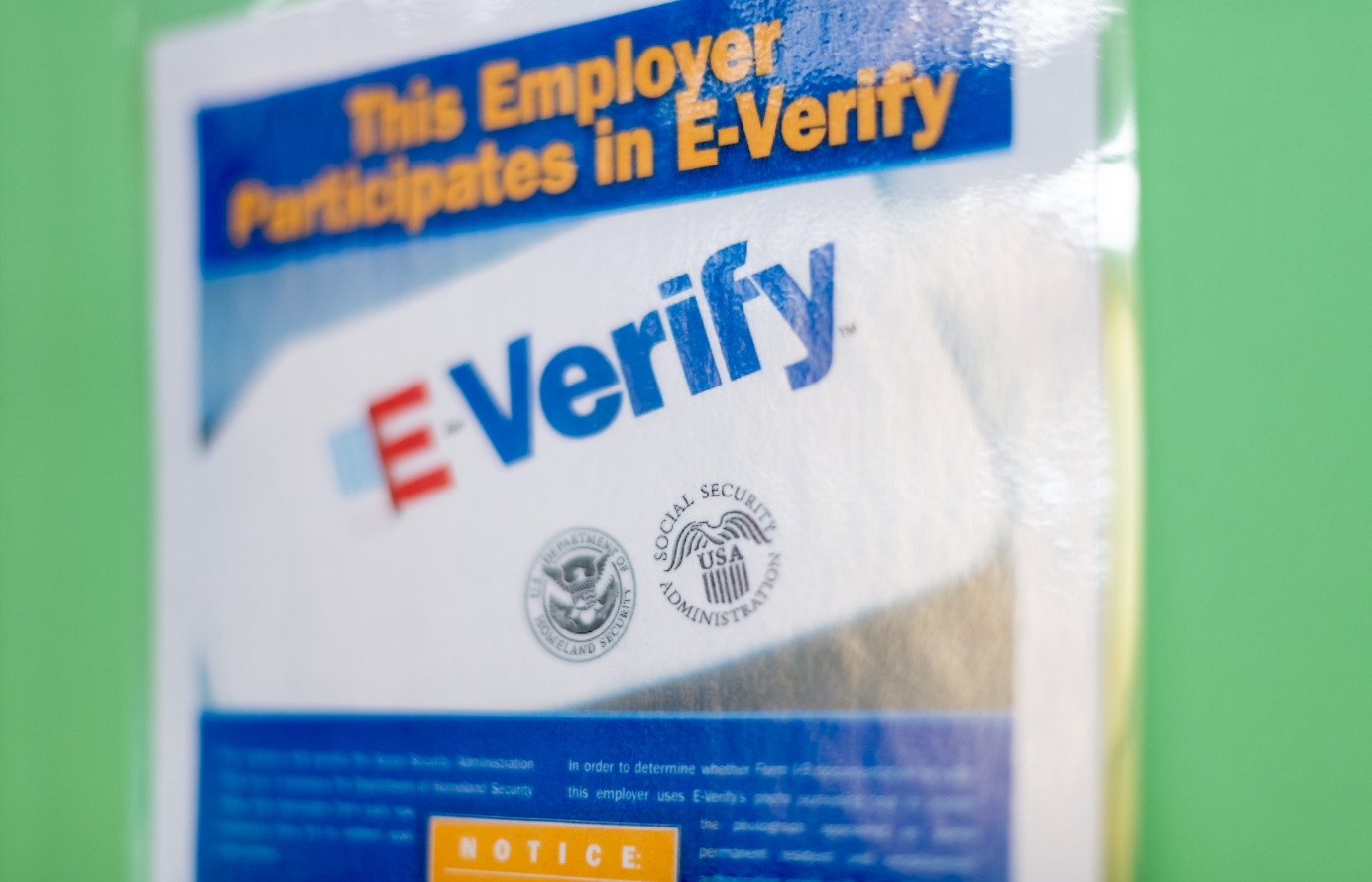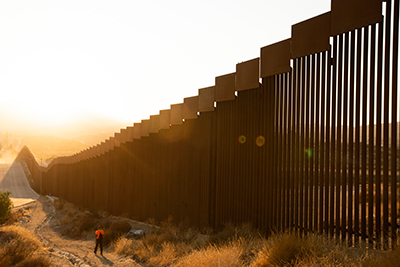Reforming the Diversity Visa Could Pay for the Wall: Here’s How
 Any bipartisan deal to reopen the federal government and deal with DACA would have to legalize some of the DREAMers, increase border enforcement, amend the diversity immigrant visa program, and fund the construction of a border wall. Democrats have compromised on the border wall but they are still only going to fund about half the lowest estimated cost of about $8 to $10 billion. There is a way to fund construction of the border wall without using taxpayer money or for Congressional Democrats to allocate a penny more than the $8 to $10 billion that they are considering: The Border Wall Investment Visa Program (BWIVP).
Any bipartisan deal to reopen the federal government and deal with DACA would have to legalize some of the DREAMers, increase border enforcement, amend the diversity immigrant visa program, and fund the construction of a border wall. Democrats have compromised on the border wall but they are still only going to fund about half the lowest estimated cost of about $8 to $10 billion. There is a way to fund construction of the border wall without using taxpayer money or for Congressional Democrats to allocate a penny more than the $8 to $10 billion that they are considering: The Border Wall Investment Visa Program (BWIVP).
As proposed here, this new program would take 10,000 green cards from the 50,000 currently allocated diversity immigrant visa program, or whatever successor program Congress creates to replace it. Congress could then shift those 10,000 green cards to a new immigration category called the Border Wall Investment Visa Program (BWIVP), which would auction them to the highest bidders each year. Under such a system, each green card could sell for at least $100,000 and potentially much more. At that high of a price, the BWIVP would raise $1 billion each year to fund the construction of a border wall without raising taxes. Congress should write into law that all funds raised through the BWIVP should automatically go toward wall construction and maintenance. Of course, Congress could also auction more or fewer than 10,000 green cards a year but this is a nice round number for the purpose of an example.
The $1 billion a year raised through the BWIVP would fund the construction of an additional 46 miles of fencing a year without taxpayers spending a dime, if the recent estimated cost of replacing the border fence were any guide to the costs of future construction. An extra $1 billion a year raised through a BWIVP would significantly stretch the eventual length of the wall relative to other funding options. Nobel Prize Winning economist Gary Becker proposed a $50,000 price per green card in 2011 but suggested selling a million annually. Prices will have undoubtedly risen since then and the BWIVP would only auction 10,000 green cards a year, so the price for each one would be higher.
A Congressional allocation of $10 billion to build the border wall would only increase its length to 780 miles, assuming construction is finished one year after passage (Table 1). Further extensions of the wall would rely on Congress appropriating funds. Future Congresses might be unwilling to do that, meaning that the wall would not extend beyond 780 miles after the original appropriation. However, a fresh infusion of funds each year from the BWIVP would guarantee that border wall construction would continue each year without Congressional interference. After eight years with a BWIVP that raises $1 billion annually, the border wall would be 370 miles longer than with only the funds from Congress. If the BWIVP raised $1.5 billion a year, after eight years the border wall would be 555 miles longer. If it raised $2 billion a year, it would be 740 miles longer. Under each of the three revenue projections, the border wall would continue to lengthen by 46 miles, 69 miles, and 93 miles a year, respectively.
Table 1
Length of Border Wall, Border Wall Investment Visa Program Revenue Projections
Year | Fencing without BWIVP (Miles) | Fencing with BWIVP $1 Billion Annually (Miles) | Fencing with BWIVP $1.5 Billion Annually (Miles) | Fencing with BWIVP $2 Billion Annually (Miles) |
Current | 317 | 317 | 317 | 317 |
1 | 780 | 826 | 849 | 872 |
2 | 780 | 872 | 918 | 965 |
3 | 780 | 918 | 988 | 1,057 |
4 | 780 | 965 | 1,057 | 1,150 |
5 | 780 | 1,011 | 1,126 | 1,242 |
6 | 780 | 1,057 | 1,196 | 1,335 |
7 | 780 | 1,103 | 1,265 | 1,427 |
8 | 780 | 1,150 | 1,335 | 1,520 |
Sources: DHS, Reuters, CBS News, Author’s Calculations.
The percentage of the border with Mexico that would be covered by a fence under the BWIVP would also increase every year (Table 2). Under the BWIVP revenue projections, it would cover 59 percent to 78 percent of the border after 8 years. The BWIVP could also pay for fence maintenance rather than new construction. BWIVP revenue of $1 billion a year would pay for the annual maintenance of about 1,200 miles of border fencing under current estimates.
Table 2
Percent of Border Covered by a Wall under Different Border Wall Investment Visa Program Revenue Projections
Year | Fencing without BWIVP (Miles) | Fencing with BWIVP $1 Billion Annually (Miles) | Fencing with BWIVP $1.5 Billion Annually (Miles) | Fencing with $2 Billion Annually (Miles) |
Current | 16% | 16% | 16% | 16% |
1 | 40% | 42% | 43% | 45% |
2 | 40% | 45% | 47% | 49% |
3 | 40% | 47% | 51% | 54% |
4 | 40% | 49% | 54% | 59% |
5 | 40% | 52% | 58% | 64% |
6 | 40% | 54% | 61% | 68% |
7 | 40% | 56% | 65% | 73% |
8 | 40% | 59% | 68% | 78% |
Sources: DHS, Reuters, CBS News, Author’s Calculations.
Immigration restrictionists complain that previous Congresses always amnesty illegal immigrants but they never follow up with border enforcement. Their complaint isn’t based on reality, but that doesn’t make it any less politically salient. Creating a BWIVP where the revenue directly goes to wall construction is a way for Congress to commit credibly to funding border enforcement in the future. If immigration restrictionist complaints are sincere then this mechanism should alleviate much of their concern.
Auctioning 10,000 visas is not a radical policy idea. In 2016, the United States allocated 3,422 EB-5 green cards to applicants who invested $500,000 to $1 million in the United States. The government charges $4,000 for each H-1B petition submitted by employers that the government deems to be H-1B dependent as well as a whole host of other protectionist fees. In 1882, the government imposed a head tax of $0.50 per immigrant that it then raised to $4.00 in 1907, and then to $8.00 in 1917. In 1959, the U.S. government levied a $12 tariff on farmers for every guest worker they hired under that short-lived Bracero program. Pricing immigration is common in the rest of the world, especially in many merit-based systems. Singapore has a monthly levy for workers based on their skill level and the concentration of foreign workers by economic sector. The United Kingdom, Australia, Canada, and New Zealand all levy substantial fees to defray social service costs. For instance, the fee for the permanent Contributory Parent visa category in Australia is AU$31,555. Antigua allows anybody to qualify for citizenship in exchange for a $250,000 direct payment to the government, a $400,000 real-estate purchase, or a business investment of $1.5 million. The United States is a more desirable location than those other nations so the government could raise more money for border security this way. If the United States wants to have a more merit-based immigration system, a BWIVP auction system is one way to move in that direction.
President Trump’s administration wants to raise visa fees to make it appear that immigrants will pay for the wall. Auctioning a small number of green cards through a BWIVP can pay for more border security in a more open, transparent, and publicly obvious way than increasing fees that are generally hidden from the public. The BWIVP would stretch the roughly $8 to $10 billion in wall funding to cover more of the border without increasing the amount of taxpayer dollars that Democrats would have to allocate for such an unpopular construction project. Even better, it would come from an economic liberalization that would more efficiently allocate scarce green cards to the highest bidders. I dislike the wall and have written extensivelyagainst it, but if it must be built, this is a better way to make sure it gets constructed than other competing proposals. Auctioning green cards through the BWIVP would raise large sums of money for border security in a way that could help resolve the shutdown, fulfill a major campaign promise by President Trump, legalize the DREAMers, and preserve the number of legal immigrants.








